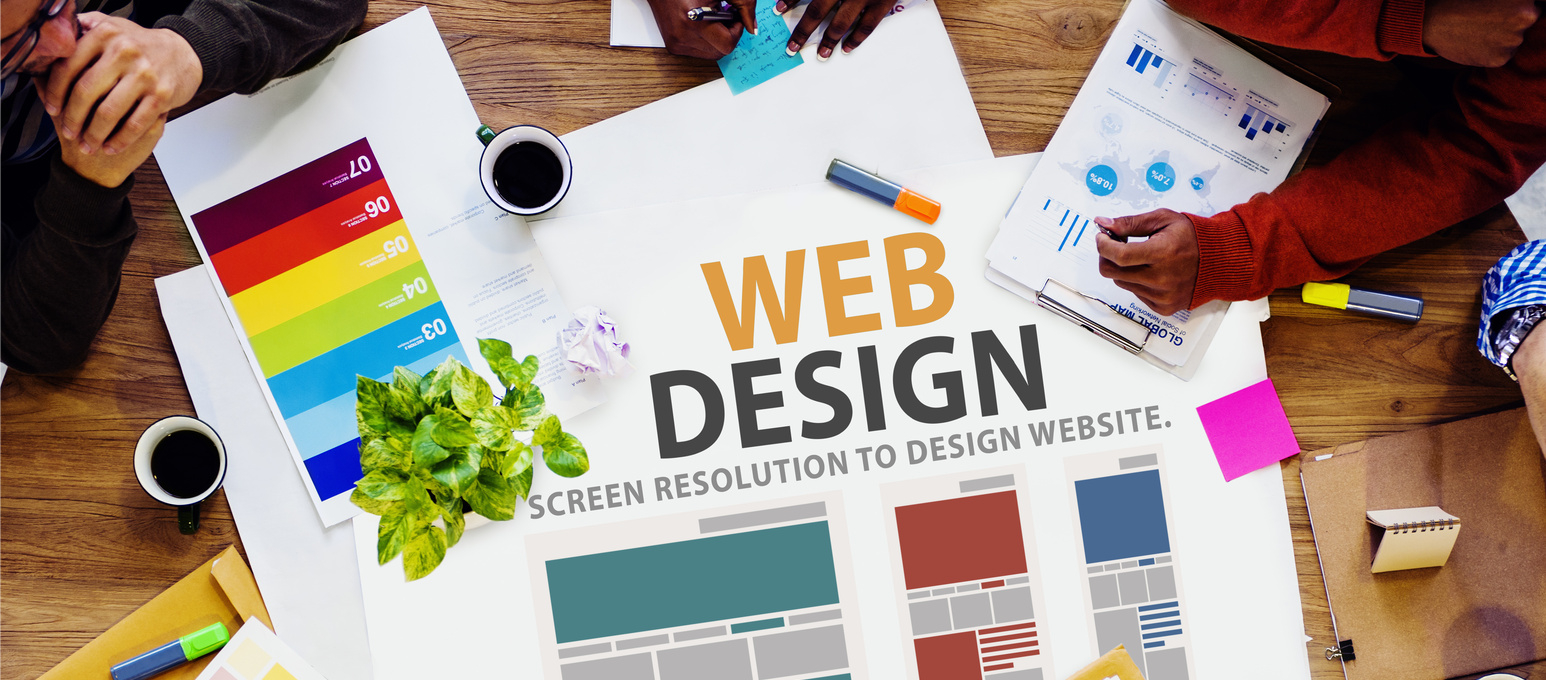
Experts tips – Do Color choice matter for Web Design?
Opting for a correct color amalgamation in the website design process is measured one of the most imperative (yet often unnoticed) components in building a successful website. Psychologists have exposed that people are prone to a subconscious level of color impersonations and that more than 60% of recognition or refusal of a site knots to this very point.
Selection of color has the great potential to provide a positive impact on the visitor and therefore, make the visitor continue the page for a long time. We all better understand – the longer the visitor stays, the more is the possibility of tempting him/her to take immediate action on the end website objective.
Does the color choice matter?
The significance of color design stalks the importance of color to the human mind. Color builds the most fabulous ideas, expresses messages, stimulate attentiveness, and produce certain excitements. Some colors carry a worldwide connotation- for instance, it is common to understand that red color is the symbol of warning and green is a sign to go. However, draw up; most people would link the color combination of red and green as Christmas day celebration. Bright colors tend to sign of happiness and staying in a positive mood. However, dark tones tend to plan the contrary. Within the psychology of hues, warm colors display enthusiasm, cheerfulness, and inventiveness; cool colors represent harmony, serenity, and peace.
Picking the right colors for a website is not only for choosing colors that you want to opt for although the colors must fortify the site and branding of the business. Colors that act well alone might not be as agreeable together as they are exclusive. By bearing in mind color combination as both a discipline, seeing how colors function together accurately, and as an art, by viewing what colors represent and how they are estimated internally and expressively, you can accomplish the perfect color mixture for your website design.
Here is a big list of things that we consider significant in determining the colors that can effectively influence your visitors.
Determine the Product / Service You Are Marketing
If you are retailing environmental or ‘green’ products, it would not be proper to utilize colors like red or orange. In spite of that, you would want to make use of greens, and earth tenors. Opt for a color that counterpart the product or service that you are offering.
Pay attention to the Target Audience
When choosing the right color for a website, you must give deliberation to the target people. The color utilized for a product fixated on the aged may not fare well with teens or younger cohorts. Likewise, overuse of highly bright colors such as red, yellow, blue and more that causes eye exhaustion and could drive visitors away.
Background Color
We over and over again find it useful to have a distinct color background. By doing this, it blows the body of the website page onward and keeps the attention on the website, itself.
Make Your Text Black
When it comes to the reading of a manuscript, people are habitual to reading black contents. It is the coolest on the eye. There is no need to lose from what people have developed using.
Color should include being comparative to the products highlighted.
As specified previously, it is imperative to tell your product/service to a color pertinent to your industry.
Red is eye-catching and potent and would turn out well for websites those engrossed on products meant for kids and also, for encouraging a visitor to take action with a “Book now”, and “Reserve now”. Red raises feeling.
You can use Orange in websites that encourage food products. It is identified to promote optimistic thinking and enhance creativity. The color also entices to the younger age group. Most of the technology companies use Orange.
Yellow indicates happiness and creativity. It enticed children, and you can use it in sites that promote time-out products. Yellow, though, can incline to pressure the eyes and must be used as an inflection color in most cases.
Green is agreeable to the human eye and is right for sightseeing websites and the websites that tell about nature. Green represents opulence and prosperity. Green also appeals trust and is one of the most up-to-the-minute / business colors.
Blue is a traditional color with amazingly high reliance value and is identified to reduce the nervous system. It is fit for sites offering hi-tech products and also, for food products. Most of the people wrongly make use of blue for text color. This should evade as it is not a standard color for the human eye to go through.
Black is valuable for sites that tell to photography and art.
Designers utilize Purple in sacred sites and holiday sites.
Helpful Color Choosing Tools
We all like tools that can assist make our lives laid-back. On a previous blog post about color, we had somebody remarking about a perfect color scheme tool. We suggest you have a look at this one if you need help choosing colors that function well together.
Don’t Make Your Website a Rainbow
A last note – the enticement to people beginning out in web design is to make use of several colors. The most influencing websites are the ones that keep the use of color to a least. Most of the time, we suggest that your website get the use of 2 – 3 colors at a maximum level. Often the major statement your site can build is in its ease.
Is the color palette you’ve chosen for your website getting the desired response?
Color is one of the most refreshing aspects of website design. It can be utilized to entice consideration, convey meaning, craft aspiration, drive alterations, and earn a consumer’s reliability. Ideal color selections take careful planning and when done correctly, can impact how a visitor translates what they see as much as design and copywriting. We have smashed down some of the essential basics on color in Mobile, Web App, Website Design Development Services to assist you in comprehending how you can make use of color wisely in your business to optimize results.
So why is the color important in website design?
Opting for the correct color combinations for the design of your website is vital for your online success. Colors can be your most influential tool to obtain a reaction from your targeted consumers. You can use colors to blend your visitors’ emotions or answer to a call-to-action on your website. Color assists us to process and store descriptions more professionally than colorless (black and white) images; this can assist to enhance brand recognition and also assist seep up the visitors to your vision to take action. Judgment subconsciously bases on color systems so your palette should not reverse your brands’ viewpoint.
Tips to choose the correct color palette for your site:
Knowing the theory behind colors is one crucial thing. Selecting a successful color palette is next one. Just begin with what you know.
Branding: If you have a reputable business, begin with colors that are on brand and then present new colors.
Your Audience: The selected colors should also signify the emotions that your brand proposes to carry. Know your target demographics and inquiry to what they answer.
Trend: Knowing color trends provides you great vision into what’s coming down the pipe, assisting you to build a website that is innovative & advanced.
Emotional: Moreover reflect what kind of emotional reply you want people to have or what story you are going to narrate.
Balance: Go on about the color synchronizations, typically when choosing on a color palette you’ll start with the leading color. Then begin to coat your palette. Murkier colors tend to be seen first and convey more pictorial weight, then work your way back to the brighter colors.
Where to find color inspiration?
Inspiration is all over the place, it can be outside, and by learning various design areas, understanding your consumers and competitive market and by staying informed with predicted color and web/branding trends. To assist you on your color excursion here are some of the principal resources used at Studio1Design.
Pantone: Pantone is best to design industry leaders when it comes to hues. Pantone offers the state-of-the-art color trends across all forms of visual arts, fashion, and Interiors, paint & plastics. Pantone is a somatic color index and the seamless tool for any designer or business creating products printed. Making use of physical color swatches enables you to understand exactly how your color will appear when it’s on paper or fabric saving you more time and estimate work.
Pinterest: Pinterest carries out a surprising amount of color palettes crafted by designers and artists all around the world. Just hunt by color, season or theme for immediate color motivation.
Color Websites: From sunny Pantone swatches to flamboyant idea boards, dedicated color websites and blogs can be a fantastic way to experience exceptional color mixtures you might not have supposed to try otherwise. Also try other sites such as Design Seeds, Color Collective, COLOURlovers, Color Wheel by Adobe or Cold for immediate color palette inspiration.
Whether built by a professional web design company or the specific, having the exact color structure on your web page is vital in achieving an expert, high-quality site that is thriving and obtained by audiences. If your website is not pleasing to its viewers, they will miscue the content of the page or even quit the site altogether and choose a more necessary substitute.
Color Theory Explained
Building a website commences with understanding the concept behind color schemes. Color schemes start by scrutinizing the color wheel, where we find three color consortiums: primary colors, secondary colors, and tertiary colors. The color idea can then please the colors by using this color wheel. Red, Blue, and Yellow are the Primary colors; they cannot be formed by mingling other color combinations. On the other hand, the primary colors themselves can be combined to create new colors, which are secondary colors. Tertiary colors form by collaborating with secondary colors.
Color theory commands how to merge colors for ideal use and appeal, which will differ depending on website layout and content itself. Choosing colors for a site requires to opt for color combinations which are simple and pleasant to the eye. The easiest way of choosing color permutations is by merging similar colors to see if they work well together. Colors can be syndicated in website design from the same color palette or diverse ones, but should not also be bright, excessively dark, or divert from the content.
Colors can make something visually pleasing:
This point is unavoidable when you can find a right equilibrium between appealing and function.
This sequence of pictures by Studio Feixen is visually attractive; the colors are agreeable and lively. However, the colors along with the outlines also assist separate particular body parts, motion, and, power through the assignment and graphic language.
The light colors on the Traditions Children’s Centers’ website complete the full of fun nature of the site that it engrosses on children crafted a visually attractive artistic with the collocation of the photo, type choices, and darker, chalk contextual. The sapphire also appeals attention to the keys on the site and strengthens the reliance factor.
Best Practices for Using Color in Web Design
When it comes to web design, there is more contemplation that you need to consider for color usage. Screens, monitor size, and audiences for websites may vary significantly from something done as a print portion, and designers have to take decisions consequently.
Know your audience
Provide to your target audience. Attributes that you need to take into account comprise demographics (age, gender, industry, and location), and the feelings you want to provoke. For instance, blue means trust and reliability and used by financial firms such as PayPal and legal services such as the Fisher Law Company. However, better is to hire the best Responsive Website design Service, India, and the USA and they will tell you the best color matches with your website designs and all hues will set to your website.



